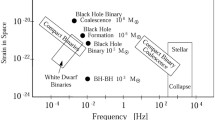Abstract
Darwin is a cornerstone mission of the Horizons 2000+ program of the European Space Agency. It has the express purpose of carrying out the first direct search for terrestrial exoplanets, and to achieve unprecedented spatial resolution in the infrared wavelength region. The detection and study of terrestrial exoplanets promises to usher in a new era in science and will affect a broad spectrum of disciplines. Further, the time line for implementation of such an instrument is now likely to be of the close order of 10 years, leading to possible answers to one of mankind’s most fundamental questions in the second decade of the 21 st century. It has been found that in order to realize am interferometer in space in the next 10–15 years, it is necessary to prepare the way through a number of intermediary steps — both on the ground and in space. In this context, we here describe GENIE — a ground based nulling interferometry experiment to be implemented at the VLTI in a partnership between ESA and ESO.
Access this chapter
Tax calculation will be finalised at checkout
Purchases are for personal use only
Preview
Unable to display preview. Download preview PDF.
Similar content being viewed by others
References
Angel R.: 1989, in: P. Bely, C. Burrows and G. Illingworth (eds.), The Next Generation Space Telescope, STScI, Baltimore, pp. 81–88.
Angel, J.R., Cheng, A.Y. and Woolf, N.J.: 1986, Nature 322, 341–343.
Bracewell R.N.: 1978, Nature 274, 780–781.
Bracewell R.N. and McPhie, R.H., 1979, Icarus 38, 136–147.
Kasting, J.F., Holland, H.D. and Pinto, J.P.: 1985, J. Geophys. Res. 90, 10,497–10,510.
Léger, A., Pirre, M. and Marceau, F.J.: 1993, A&A 277, 309–313.
Léger, A., Mariotti, J.M., Mennesson, B., Ollivier, M., Puget, J.L., Rouan, D. and Schneider, J.: 1996, Icarus 123, 249–255.
Author information
Authors and Affiliations
Editor information
Editors and Affiliations
Rights and permissions
Copyright information
© 2003 Springer Science+Business Media Dordrecht
About this chapter
Cite this chapter
Fridlund, M., Gondoin, P. (2003). Genie — The Darwin Demonstrator. In: Garcia, P.J.V., Glindemann, A., Henning, T., Malbet, F. (eds) The Very Large Telescope Interferometer Challenges for the Future. Springer, Dordrecht. https://doi.org/10.1007/978-94-017-0157-0_9
Download citation
DOI: https://doi.org/10.1007/978-94-017-0157-0_9
Publisher Name: Springer, Dordrecht
Print ISBN: 978-90-481-6379-3
Online ISBN: 978-94-017-0157-0
eBook Packages: Springer Book Archive




